D Link T1130 2.4Ghz/54Mbps Wireless MINI PCI Card User Manual 802 11g Mini PCI manual
D Link Corporation 2.4Ghz/54Mbps Wireless MINI PCI Card 802 11g Mini PCI manual
D Link >
Users Manual

IEEE 802.11g (draft)
Wireless Network Adapter
User Manual
version 1.0
Manufacturer's Disclaimer Statement
The information in this document is subject to change without notice and does not
represent a commitment on the part of the vendor. No warranty or representation,
either expressed or implied, is made with respect to the quality, accuracy or fitness for
any particular purpose of this document. The manufacturer reserves the right to
make changes to the content of this document and/or the products associated with it at
any time without obligation to notify any person or organization of such changes. In
no event will the manufacturer be liable for direct, indirect, special, incidental or
consequential damages arising out of the use or inability to use this product or
documentation, even if advised of the possibility of such damages. This document
contains materials protected by copyright. All rights are reserved. No part of this
manual may be reproduced or transmitted in any form, by any means or for any
purpose without expressed written consent of its authors. Product names appearing
in this document are mentioned for identification purchases only. All trademarks,
product names or brand names appearing in this document are registered property of
their respective owners.
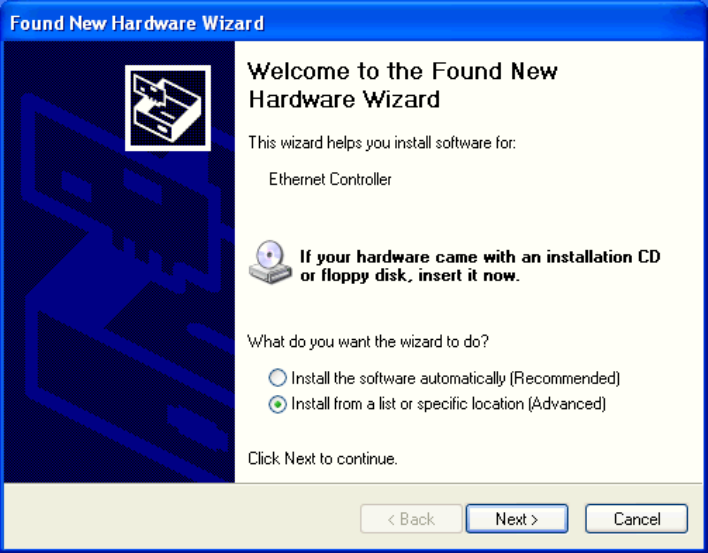
Driver Installation
Step 1: Insert the 802.11g Wireless Network Adapter into your computer.
Windows Found New Hardware Wizard will come up.
Select the second option and click “Next” to continue.
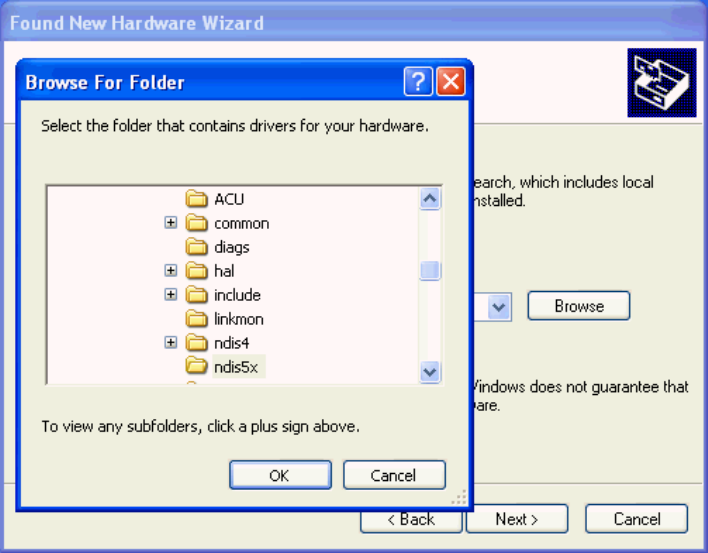
Step 2: Select the driver to install.
Click “Browse” to select the folder where you store the driver files.
Click “OK” to continue.
Click “Next” to continue.
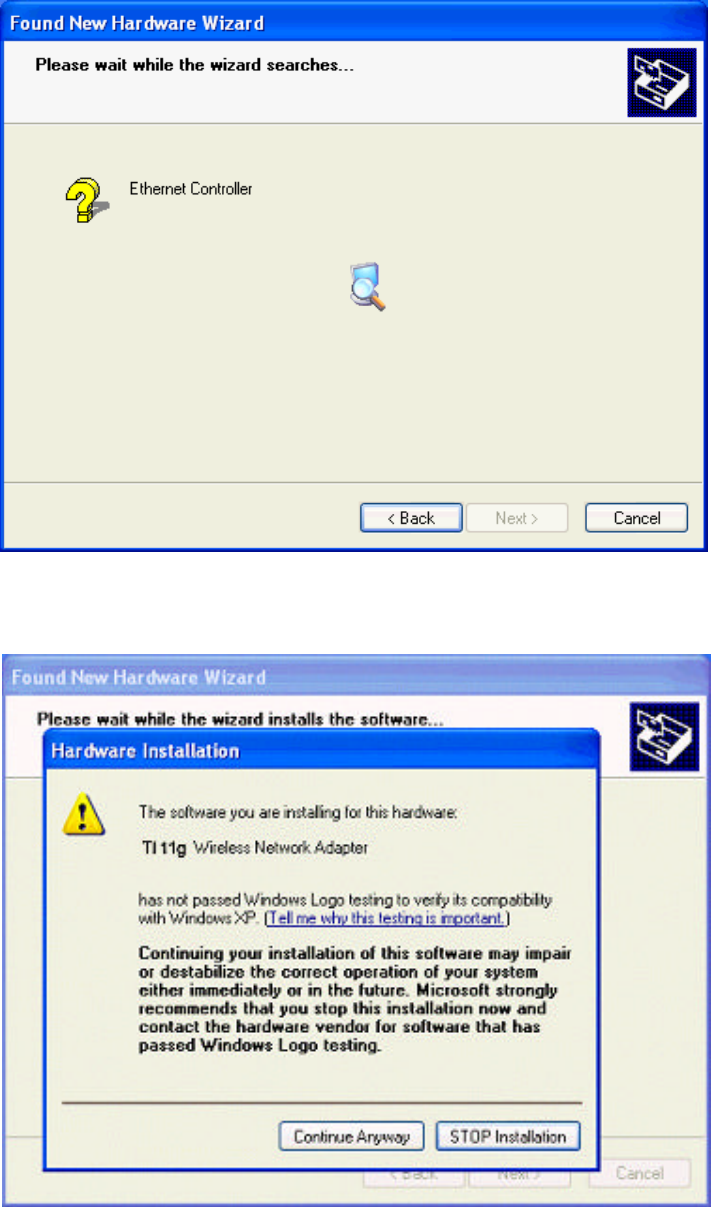
Step 4: Driver Found
Click “Continue Anyway” to continue
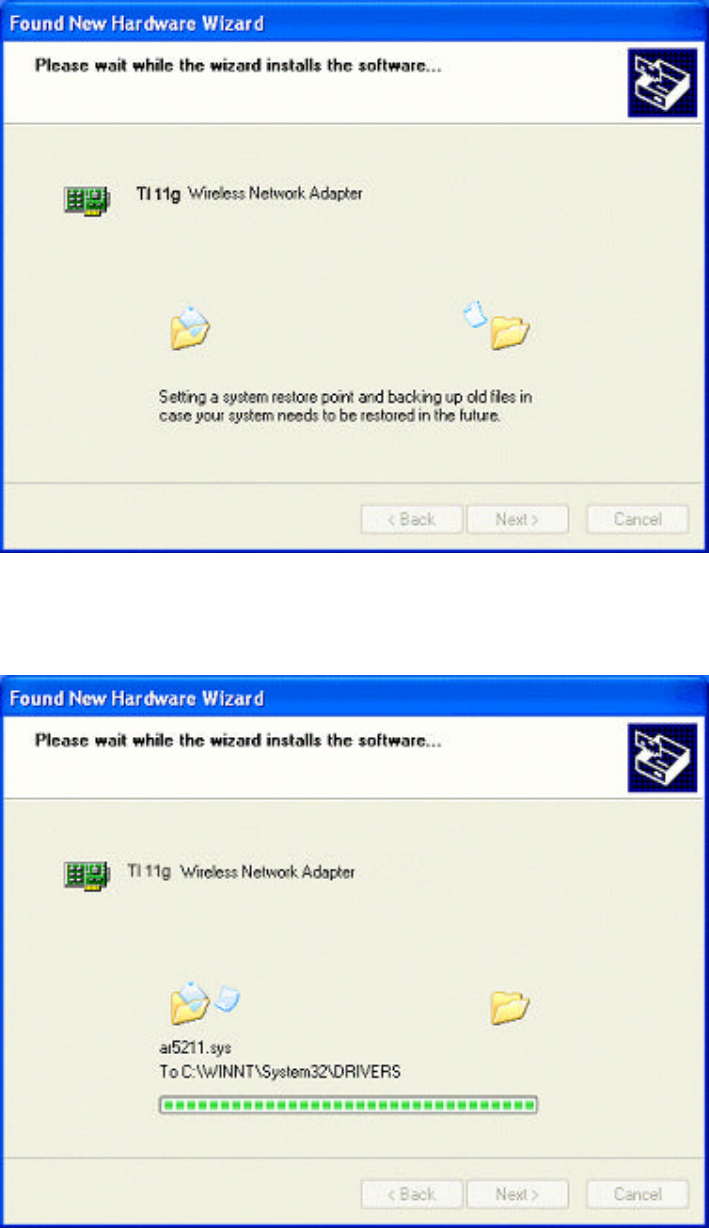
Step 3: Driver Installation
Driver files are being saved to your Windows system.
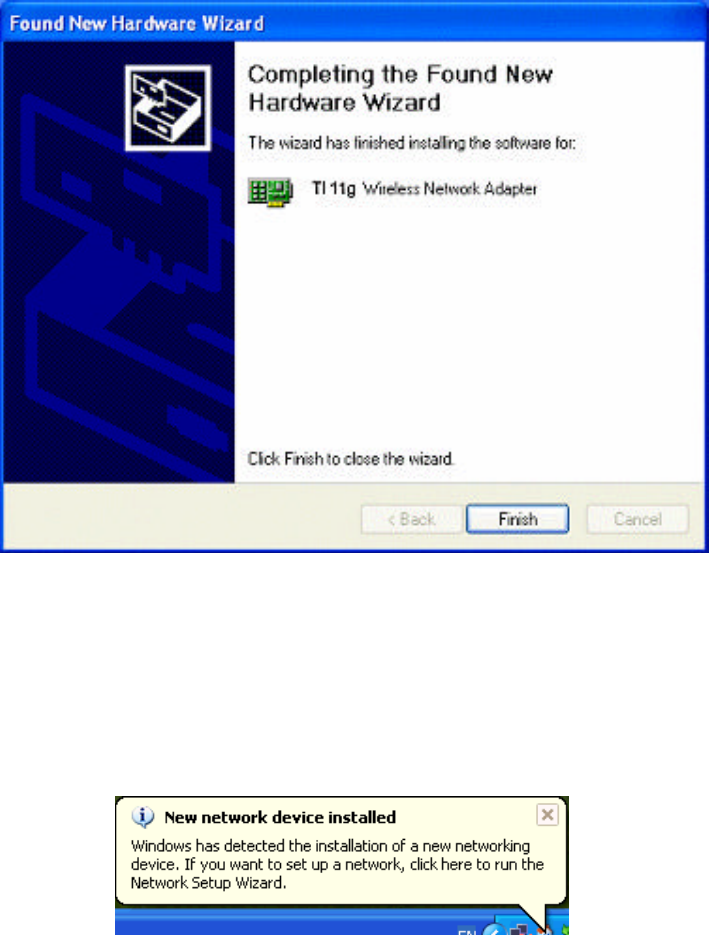
Step 4: Driver Installation Complete
Click “Finish” to complete the driver setup.
The following message will appear as soon as you successfully installed the driver for
your IEEE 802.11g wireless network adapter.
Federal Communication Commission Interference Statement
This equipment has been tested and found to comply with the limits for
a Class B digital device, pursuant to Part 15 of the FCC Rules. These
limits are designed to provide reasonable protection against harmful
interference in a residential installation. This equipment generates,
uses and can radiate radio frequency energy and, if not installed and
used in accordance with the instructions, may cause harmful
interference to radio communications. However, there is no guarantee
that interference will not occur in a particular installation. If this
equipment does cause harmful interference to radio or television
reception, which can be determined by turning the equipment off and on,
the user is encouraged to try to correct the interference by one of the
following measures:
-Reorient or relocate the receiving antenna.
-Increase the separation between the equipment and receiver.
-Connect the equipment into an outlet on a circuit different from that
to which the receiver is connected.
-Consult the dealer or an experienced radio/TV technician for help.
This device complies with Part 15 of the FCC Rules. Operation is
subject to the following two conditions: (1) This device may not cause
harmful interference, and (2) this device must accept any interference
received, including interference that may cause undesired operation.
FCC Caution: Any changes or modifications not expressly approved by
the party responsible for compliance could void the user's authority to
operate this equipment.
IMPORTANT NOTE:
FCC Radiation Exposure Statement:
This equipment complies with FCC radiation exposure limits set forth for an
uncontrolled environment. This equipment should be installed and operated
with minimum distance 20cm between the radiator & your body.
This transmitter must not be co-located or operating in conjunction with any
other antenna or transmitter.
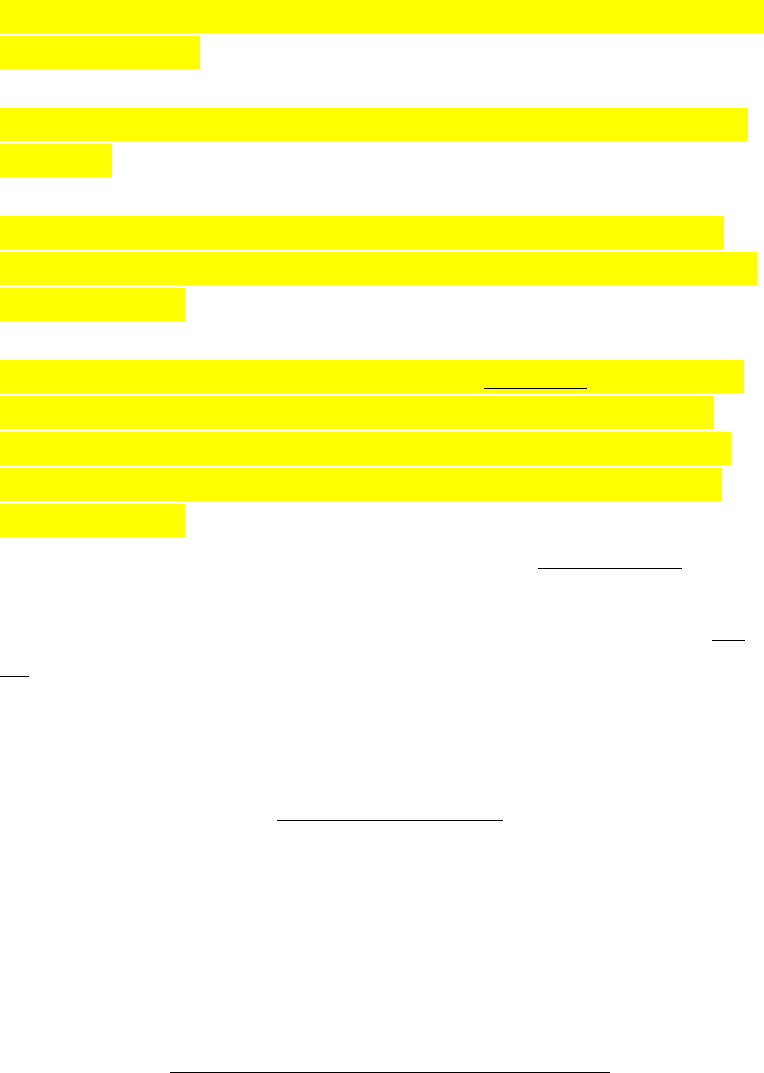
This device is intended only for OEM integrators under the following
conditions:
1) The antenna must be installed such that 20 cm is maintained between the
antenna and users.
2) The transmitter module may not be co-located with any other transmitter
or antenna.
3) The Module is approved using the FCC ‘unlicensed modular transmitter
approval’ method. Therefore the module must only be used with the originally
approved antennas.
As long as the 3 conditions above are met, further transmitter testing will not
be required. However, the OEM integrator is still responsible for testing
their end-product for any additional compliance requirements required with
this module installed (for example, digital device emissions, PC peripheral
requirements, etc.).
IMPORTANT NOTE: In the event that these conditions can not be met (for
example certain laptop configurations or co-location with another transmitter),
then the FCC authorization is no longer considered valid and the FCC ID can
not be used on the final product. In these circumstances, the OEM integrator
will be responsible for re-evaluating the end product (including the transmitter)
and obtaining a separate FCC authorization.
End Product Labeling
This transmitter module is authorized only for use in device where the antenna
may be installed such that 20 cm may be maintained between the antenna and
users (for example :Wireless AP, Wireless Router ). The final end product must
be labeled in a visible area with the following: “Contains TX FCC ID:KA2T113
0”.
Manual Information That Must be Included
The OEM integrator has to be aware not to provide information to the end user
regarding how to install or remove this RF module in the users manual of the
end product which integrate this module.
The users manual for OEM integrators must include the following information
in a prominent location “ IMPORTANT NOTE: To comply with FCC RF
exposure compliance requirements, the antenna used for this transmitter must
be installed to provide a separation distance of at least 20 cm from all persons
and must not be co-located or operating in conjunction with any other antenna
or transmitter.